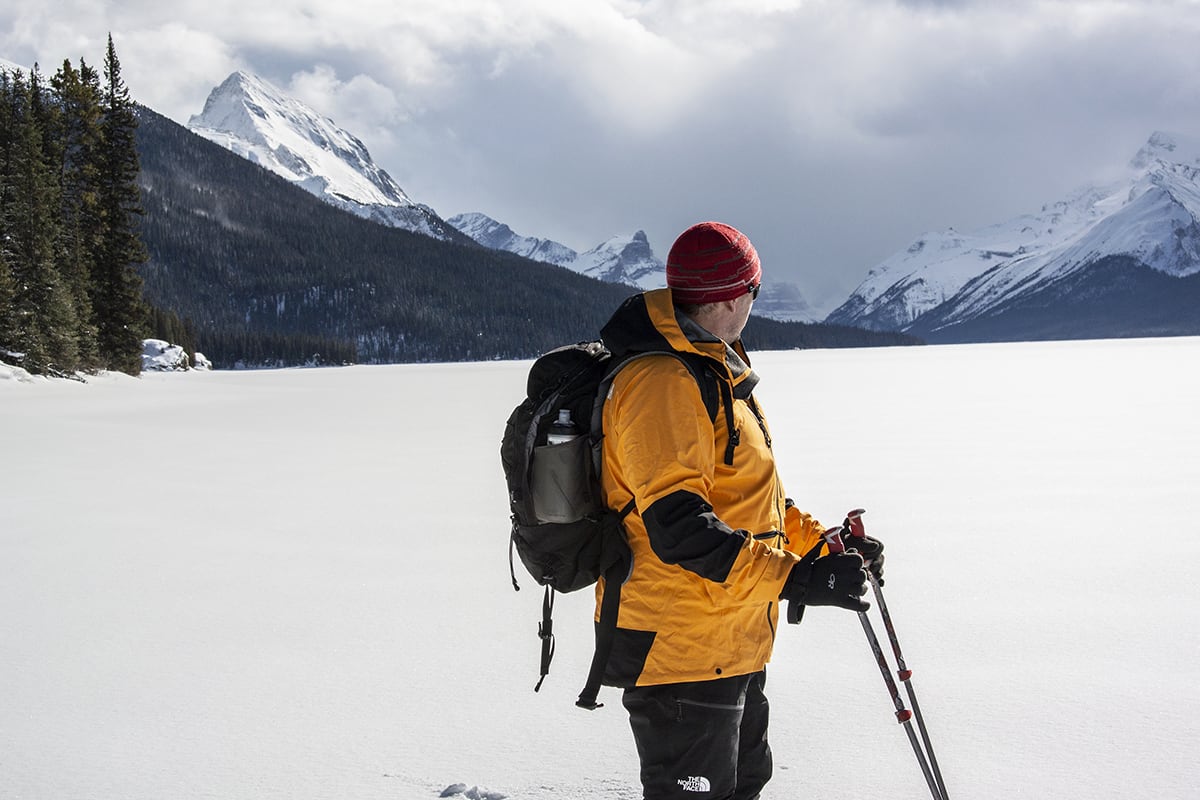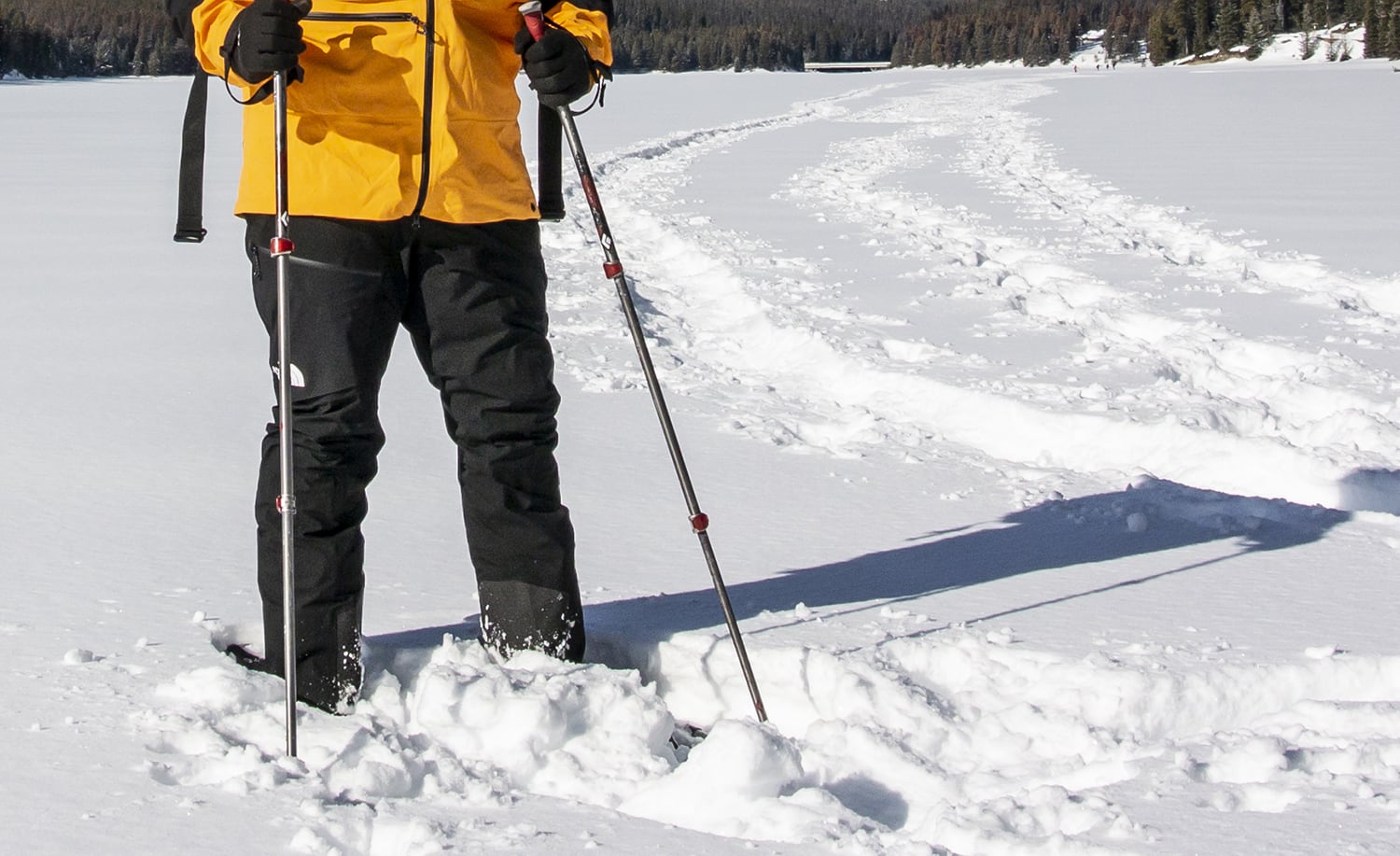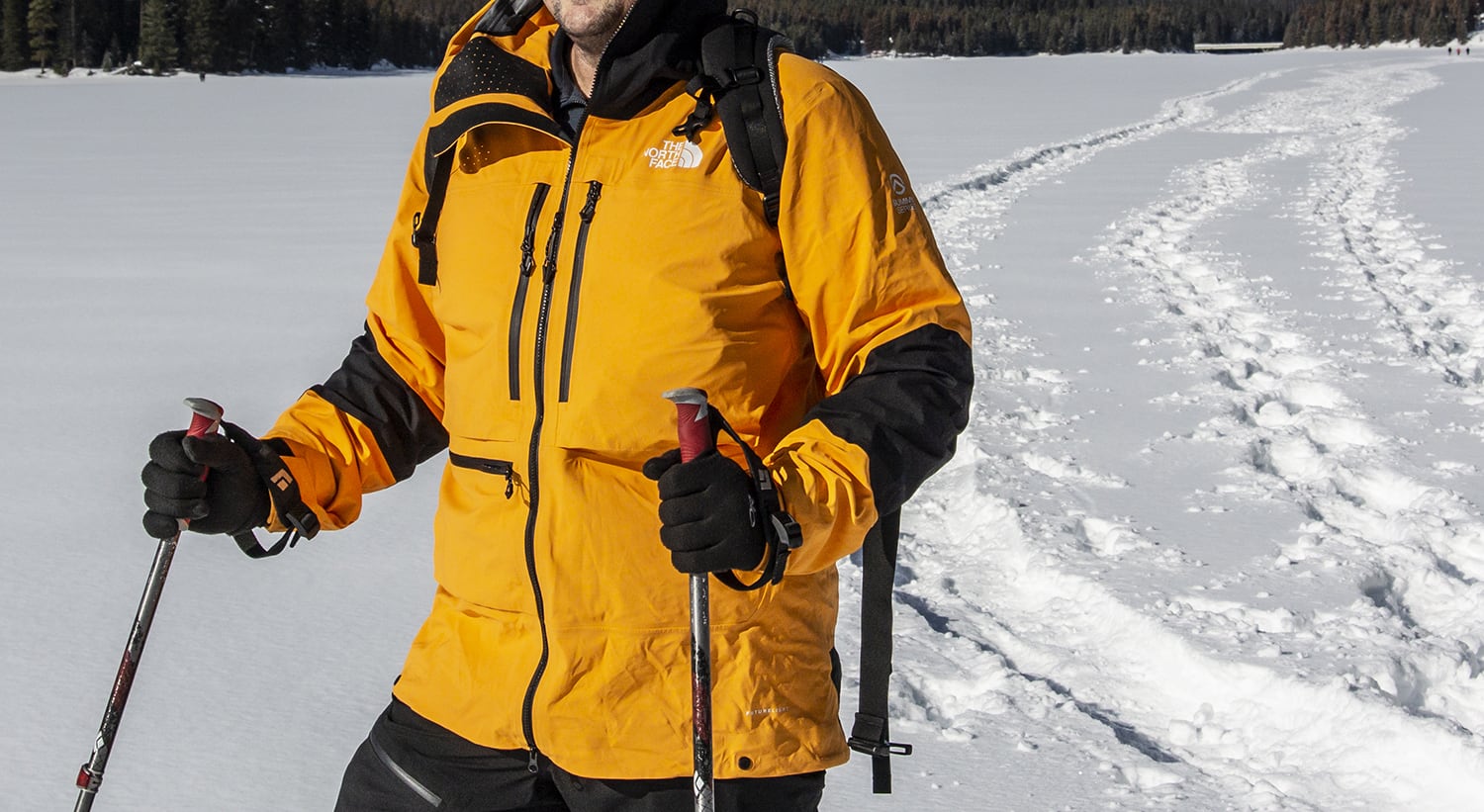Tested: The North Face Futurelight

Aus Geo Adventure Editor Justin Walker and Senior Photographer Mark Watson grab a number of The North Face garments that feature Futurelight, its new waterproof/breathable membrane technology, and put them to the ultimate test.
The North Face Summit L5 LT Futurelight Jacket and Pants
This lightweight, robust combo from The North Face (TNF) were the first Futurelight products I sampled when TNF claimed they intended to disrupt the status quo and take on the undisputed king of waterproof breathable tech, Gore-Tex. TNF’s aim was to deliver the most advanced waterproof-breathable outerwear on the market, and to date they appear to have delivered on that promise.
On donning the Summit L5 LT Futurelight garb it was immediately apparent this new fabric was phenomenally supple and lightweight whilst offering a surprising degree of four-way stretch for a waterproof garment. The durable belt loops combined with elastic at the back of the waistband meant fit was precise and the 170D X 30D Keprotec® (Nylon/Kevlar®) kick patches offered protection from ski edges and crampons. Even the single thigh pocket was well placed.
Made of 100% recycled polyester, the 20D x 30D 81 g/m² FUTURELIGHT™ L5 Jacket weighs in at a mere 350 grams and L5 pants at 260 grams, both supplied with accompanying stuff sacks. If you’re looking for a super packable lightweight solution, the L5 Kit certainly ticks most boxes, however super-lightweight does have its downside; Durability. My banana suit, as my bright yellow L5 kit has become affectionately known, now displays a number of small nicks from sharp ski edges when boot-packing.

More than a year on however the L5 kit is going strong. It’s not only handled a trial by fire at the Futurelight launch in the shadow of the Matterhorn in the Swiss Alps but also both in resort and on backcountry sojourns in Australia and New Zealand, proving the nano-weaving tech also performs remarkably well in the wetter, warmer Antipodean environments. If you run a cold engine you may find the outer fabric of the L5 kit a little too breathable, but L5 is predominantly for those who demand super-light kit for climbing, touring or alpine mountaineering.
For most of us the 70D X 70D 146 G/M² FUTURELIGHT 3L (three-layer) of the Summit series will offer better protection for everyday use whilst still delivering the waterproofness and breathability for adventures.
I spent a good number of days in the Summit series Freethinker Bib-Pant and Jacket at the toasty tail-end of NZ’s 2019 winter and was impressed with the slightly heavier weight kit’s breathability. The intention to test the Steep Series Futurelight has been waylaid by COVID-19 so as soon as we are able, we’ll get the gear to the Arctic we will deliver our cold-climate reports on what worked and what didn’t. – Mark Watson

The North Face Summit Series L5 Futurelight pants & Summit Series 3L jacket
After hearing Mark ‘Watto’ Watson bang on about The North Face’s new Futurelight fabric – all before I could get my hands on any – it was with some excitement that I finally scored some of the US giant’s new Futurelight apparel for a quick week in Jasper, Alberta, during winter. The plan was for a mix of cold-weather adventures, such as ice trekking, fat-biking and snow shoeing, and dog sledding – all activities in which to test TNF’s claims of Futurelight’s breathability and robustness. For this northern hemisphere sojourn I had a pair of L5 Futurelight pants, and an L5 outer shell jacket.
L5 Futurelight pants
Incredibly light in weight (260g for a Large), the L5 LT pants were the item I was most worried about in terms of robustness. But that worry was unfounded; wearing these pants each day, they were great. The pants offered excellent articulation (ability to move/stretch freely), owing to the 3D ergonomic fit, and were especially impressive during the 16km of fat-biking through snow, where there was plenty of effort involved, on top of excessive repetitive leg/hip movement when pedalling. I feared I would end with ‘sweaty’ legs but this, as for when I did a day of snow shoeing, was not the case.

Feature-wise, the elasticized rear waistband makes for a comfortable fit, while the lengthy side-zips made putting on my hefty leather trekking boots a doddle. The Kevlar kick-patches are a great idea and, of course, reflect the climbing remit of these pants. The pockets were (again, as mentioned by Mark) easy to access and use – the perfect case of not too little and not too much in terms of ensuring the pants weren’t ‘bulky’. Overall, the L5 FL pants were impressive. I unfortunately missed out on the ice-climbing part of my visit, so cannot vouch for durability on ice and/or any sharp implements that may be nearby, but for those looking for a specialist pair of climbing pants, that can do double-duty in less extreme conditions, these are an option.
The North Face Summit Series L5 FL (3L) jacket
My first thought when I pulled out the L5 Futurelight jacket (using a three-layer fabric and weighing in at an average of 660g) was that nobody would miss seeing me, thanks to TNF’s nifty idea to revitalise heritage colour schemes. The yellow/black combo looks the goods, for sure. I alternated wearing this over a couple of merino layers and sometimes adding a mid-layer jacket or fleece.
I wore the L5 jacket during my day of fat-biking in the snow, and it was only at full exertion for long periods that there was discernible moisture inside the jacket. My skin still stayed pretty dry thanks to the moisture wicking and breathability that the outer layer offered. I never got uncomfortable or damp enough to want to stop to swap out a layer, though. Speaking of comfort, the jacket’s drop-tail hem is a winner; this simple design feature mean that even when bent over to adjust my snow-shoes my lower back stayed warm and protected.

The L5 jacket is rugged in its construction and positively beefy compared to the L5 pants, reflecting its alpine climbing remit. To this, TNF designers eliminated shoulder seams from the shoulders of the jacket, ensuring you can lug your overloaded pack without garnering sore points where the harness goes across your shoulders. The large hood can take a climbing helmet easily but can also be cinched down tight sans helmet. There are two chest pockets (accessed via vertical zips) that were large enough for me to store my Nikon AW1 camera, and three other pockets. The pockets have large easy-pull zips, great for when wearing gloves.
Again, like the Summit Series pants, the L5 jacket is built for primarily mountain sports, i.e. ski-touring, mountaineering and ice-climbing, but is easily adapted to general outdoor duties. Plus, it really does seem to fulfil The North Face’s promise of doing-away with having to swap between a soft-shell and hard-shell outer layer when in the field, thanks to its overall comfort, versatility and functionality. All this, plus the excellent manufacturing quality – evident in the high stitch-count and tight seams – does make that hefty asking price more palatable, as it should last many years of reliable outdoor service. – Justin Walker
See www.thenorthface.com.au for more info on the entire Futurelight range of apparel.




